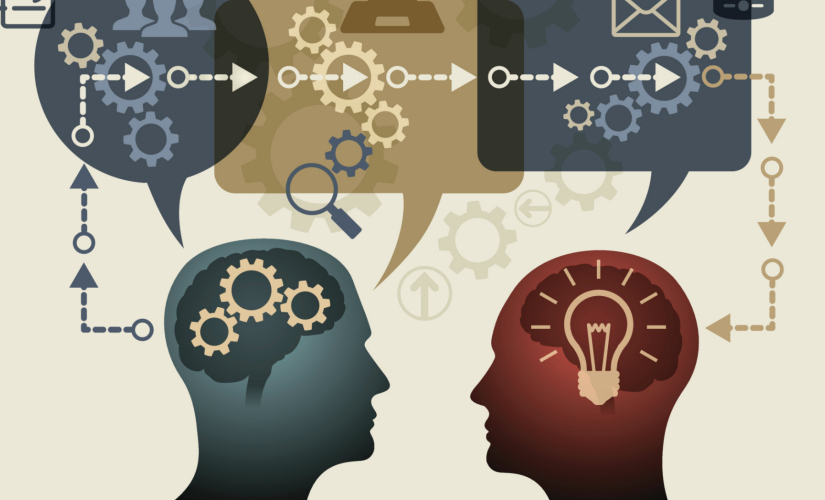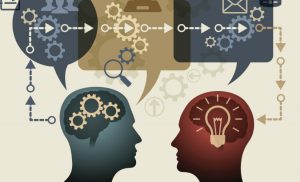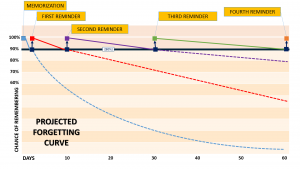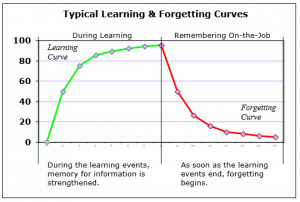

Having a workforce that is competent and knowledgeable is critical to any organisation’s success. Money, time and energy are invested significantly into training people up to be knowledgeable, safe and proficient. The challenge though, is retaining that learning and ensuring it is transferred back to the workplace and the knowledge and skills acquired are correctly and swiftly applied.
Why is this so hard to achieve? From our experience, the main problem is that the training fails to engage and motivate learners to acquire the skills and knowledge and the result is made worse by the fact that there is often little, or no follow-up to ensure that what has been trained has actually been understood and is being correctly applied.
The bottom line is that the return on investment is not as high as it could be and often costs increase with the need to re-train people.
By applying the principles of brain-friendly learning, we can increase the success rate from the classroom to the workplace. There are too many principles to cover here, but we have chosen 4 tips that you can implement immediately to kick start your accelerated learning journey. Remember, these principles apply to any form of learning- coaching, mentoring, on the job training, induction etc.
We acknowledge that it can be more of a challenge in an e-learning environment, adaptations can still be made though.
1 Fact – We Forget what we have Learned VERY Quickly
Before we have left the learning environment, we have already forgotten much of what we’ve learned. Between 1880 and 1885 Hermann Ebbinghaus created the forgetting curve (by teaching himself a list of nonsense syllables and measuring how long it took him to remember them).
The theory still holds true today (Study replicated by Jaap M. J. Murre and Joeri Dros in 2015) that without repetition, review and reflection, we can forget up to 80% of what we have learned within a week.
So how can we maximise remembering and minimise forgetting? By creating the optimum learning environment and experience – here’s how.
3 Insights
We know that one of the best ways to create the optimum environment for learning is….. Well sorry, it‘s a secret …… passed down from generation to generation and known only to a very select few people who are ‘special trainers’. Want to know more?
1. Engage Learner’s Curiosity – Curiosity might have killed the cat as the saying goes, but it helps us to learn! Create some curiosity (as we just did!) and your brain releases the hormone dopamine from your reward system, which not only helps you to pay attention but aids memory retention.
2. Create the Goldilocks Environment – when it comes to the optimum learning environment, there is a delicate balance to be found. Neuroimaging research reveals that stressful learning environments create disturbances in the brain’s learning circuits reducing learning capacity. Environments that are too comfortable and not challenging enough, create lethargy and lack of motivation in learners.
We need to create a special balance of ‘safe tension’ where learners feel psychologically safe to speak up and have a go and at the same time are challenged enough to go beyond their comfort zone and pay sustained attention. When we are at the edge of our comfort zone, we release adrenaline which helps us to pay attention and remain focused.
3. Emotion impacts Retention. If we create an environment of positive emotion, we are more likely to remember what we have learned as the production of dopamine acts like a sticky post-it note for our memory. If we are learning in an emotionally negative environment however, our brains close down to learning as they focus on self-preservation.
One of the most powerful ways to bring together information and emotion is in the form of story, so sharing our experiences, scenarios, case studies, experiments etc. will significantly increase learning retention (even more so if we encourage our participants to share their experiences and stories too).
4 Tips for Turning Learning into Action
1. So what do you think is one of the most powerful tips we can share, go on, have a go! Well, the answer is….guessing! Guessing is good. Research by the University of California shows that, even if we guess wrongly, we remember the correct answer for longer. Encourage guessing as it also makes for that optimum learning environment of psychological safety combined with a little tension for maximum attention.
2. Break it Down and Space it Out. Where possible, break learning down into bite size chunks. Too often we see people coming out of a 3-day intensive workshop or a whole week of induction and they have that ‘glazed over’ look, their brains are full to the brim.
Our brains need time to process and digest information and need sleep to embed learning so if we can combine spacing our learning with the next tip, we significantly increase our chances of learning transfer.
3. Repeat, Review and Reflect to Remember – think back to when you first learned to drive a car. How long did it take? More than once we suspect!
The brain needs repetition to strengthen the weak neural pathways formed with the initial learning, The best form of repetition (see curve below) comes when we create time, both inside and outside of the learning environment, to have participants recap to each other, review learning, reflect on the meaning and contextualise information.
When we do this, they will really get the WIIFM (what’s in it for me) out of the learning experience.

Source – Doug Rohrer & Harold Pashler 2007
Priming the brain with pre-work is a great way to start the learning journey. As external providers of learning experiences, we strongly encourage our clients to provide us with access to participants both before the program takes place and at spaced intervals afterwards. The model above shows it’s possible to achieve and maintain up to a 90% retention rate with repeat reminders.
4. Build on what’s already Known – we learn best when we can layer new information on top of what we already know, so the ‘chalk and talk’ approach of bringing people into a learning environment and offering them a fire hydrant of information, is highly ineffective.
One of the most effective ways to open each learning segment starts with “Tell me what you know about X”. Not only are we helping to bring existing learning to the fore, but we enhance the status of participants, acknowledging their existing expertise.
“Tell me and I’ll forget, show me and I’ll remember, Involve me and I’ll Understand”Confucius
In Summary
As you can see, there is a lot to creating an optimum learning environment. As with every change we advocate, we encourage you to start small and choose just one tip to implement and notice the changes in learner engagement and knowledge retention.
Knowledge transfer is of significant importance in business today. In fact, it’s so important that we’re looking forward to partnering with Emma Weber from Lever – Transfer of Learning who created the Turning Learning™ methodology, for ensuring that what people gain through learning is transferred into real behavioural change across an organisation.


Leave a Reply